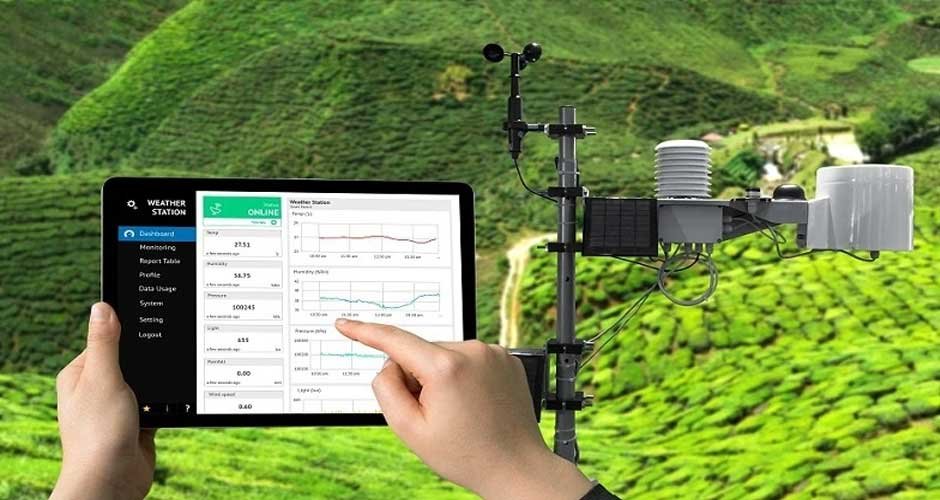In the battle against environmental degradation and climate change, environmental monitoring stations stand on the front lines, serving as vigilant guardians of our planet’s health.
These sophisticated setups, equipped with advanced technologies, continuously gather data on various environmental parameters, offering invaluable insights into the state of our ecosystems.
From the depths of the oceans to the peaks of mountains, these stations are pivotal in understanding the complex interactions within ecosystems and devising strategies to protect them.
The Vital Role of Environmental Monitoring
Environmental monitoring involves the systematic collection of data regarding air quality, water quality, soil conditions, and biodiversity, among other factors.
This process is critical for assessing the health of ecosystems, identifying trends over time, and detecting changes that may indicate environmental stress or degradation.
By providing a comprehensive picture of environmental conditions, monitoring stations help scientists, policymakers, and the public make informed decisions aimed at preserving the natural balance and ensuring the sustainability of our resources.
Air Quality Monitoring
Air quality monitoring stations are crucial for tracking pollutants such as carbon monoxide, sulfur dioxide, nitrogen oxides, and particulate matter.
These stations provide real-time data crucial for evaluating pollution sources, understanding their impact on human health and the environment, and enforcing air quality standards.
In urban areas, where the concentration of pollutants is often higher, these stations play a key role in urban planning and traffic management to minimize exposure to harmful pollutants.
Water Quality Assessment
Water quality monitoring stations, located along rivers, lakes, and coastlines, test for indicators of pollution, including chemical contaminants, heavy metals, and microorganisms. This information is essential for protecting drinking water supplies, recreational waters, and aquatic habitats.
By identifying sources of contamination, such as industrial discharges or agricultural runoff, efforts can be directed towards mitigating pollution and safeguarding water resources for future generations.
Soil and Land Use Monitoring
Monitoring stations dedicated to soil and land use provide data on soil composition, moisture levels, and land degradation processes, such as erosion and desertification. This information is vital for agriculture, forestry, and land management practices, helping to promote sustainable land use, enhance soil fertility, and prevent land degradation.
Biodiversity and Ecosystem Health
Biodiversity monitoring stations track changes in species populations and habitats, offering insights into the health and resilience of ecosystems.
These stations are fundamental in conservation efforts, enabling early detection of threats to biodiversity, such as habitat loss, invasive species, and climate change impacts.
Through long-term monitoring, scientists can assess the effectiveness of conservation initiatives and adapt strategies as needed.
Technology at the Heart of Environmental Monitoring
The effectiveness of environmental monitoring stations largely depends on the technology they employ. Remote sensing techniques, satellite imagery, drones, and automated sensors enable continuous and wide-ranging data collection with minimal human intervention.
These technologies allow for the monitoring of remote or inaccessible areas, enhancing our understanding of global environmental patterns and changes.
Integrating Level Switches in Environmental Monitoring
Level switches are crucial in environmental monitoring, notably in water quality assessment and soil moisture monitoring. They help maintain optimal water levels and soil moisture, preventing flooding, drought, and land degradation. By integrating these devices, monitoring stations improve efficiency and responsiveness, protecting natural ecosystems.
Remote Sensing and Satellite Imagery
Satellites equipped with remote sensing capabilities provide a bird’s-eye view of Earth’s surface, capturing data on land cover changes, vegetation health, and atmospheric conditions. This global perspective is invaluable for tracking large-scale environmental phenomena, such as deforestation, urban sprawl, and the melting of polar ice caps.
Drones and Automated Sensors
Drones and automated sensors offer flexibility and precision in data collection, allowing for detailed studies of specific locations or phenomena. Drones can access difficult terrains, collect samples, and take high-resolution images, while automated sensors continuously record data on various environmental parameters, sending updates in real-time to researchers and decision-makers.
The Impact of Environmental Monitoring Stations
The data collected by environmental monitoring stations have a profound impact on our ability to protect the environment. They inform climate change research, guide conservation efforts, support disaster preparedness and response, and influence environmental policy and regulations.
By tracking the effects of human activities and natural processes on ecosystems, these stations play a crucial role in promoting sustainable development and environmental stewardship.
Informing Policy and Public Awareness
Environmental monitoring stations not only guide scientific research and policy formulation but also raise public awareness about environmental issues. The dissemination of monitoring data through online platforms and media outlets fosters a greater understanding of environmental challenges and encourages individual and collective actions toward sustainability.
The Future of Environmental Monitoring
As we face escalating environmental challenges, the role of environmental monitoring stations will become increasingly important. Advances in technology and data analytics are expected to enhance the accuracy, efficiency, and scope of monitoring efforts.
Furthermore, the integration of artificial intelligence and machine learning techniques promises to revolutionize the analysis of environmental data, enabling predictive modeling and more effective management of natural resources.
Conclusion
Environmental monitoring stations are indispensable allies in our quest to understand and safeguard the natural world. By tracking the pulse of the planet’s ecosystems, they provide the knowledge necessary to address environmental challenges and ensure a sustainable future for all inhabitants of Earth.
As guardians of nature, these monitoring stations embody the convergence of technology and environmental science, heralding a new era of conservation and stewardship.


Comments are closed.